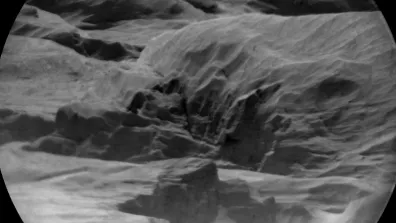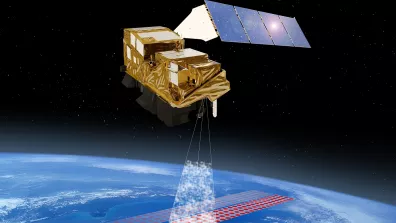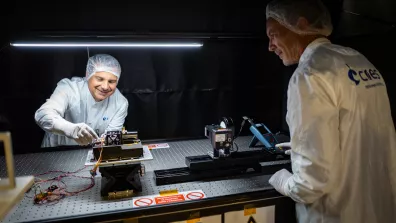Two days later, on Wednesday August 21, at around 8.20 pm French time, the millionth ChemCam shot was fired at Mars. This was Sol 4281, the 4281st Martian day of the mission. The data were received on Thursday August 22nd for analysis by the American team.
Royce Lakes, the target of the millionth shot
The target of this millionth shot: a fragment of rock, named Royce Lakes, which was broken by the rover itself when it rolled over it.
The whitish interior of the rock, contrasting with the orange-red appearance of the Martian surface, immediately caught the eye of the scientists.
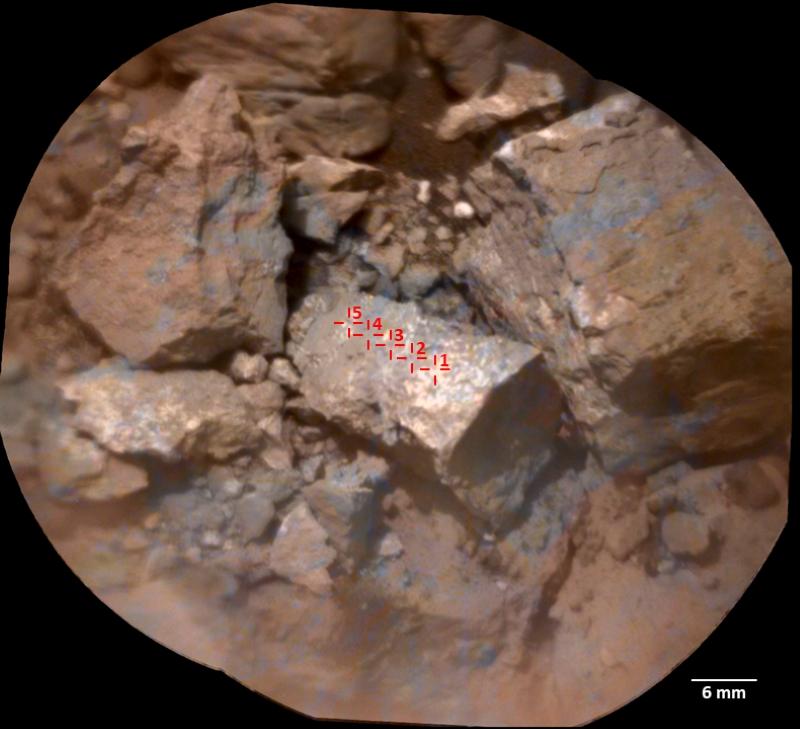
Sulfur on the surface of Mars
Other recent observations were decisive in the choice of this target: sulfur crystals were discovered in a valley on Mount Sharp, which the rover is currently climbing. Scientists are wondering whether this rock will have the same properties...
As usual, several measurement points were made on this target, 5 in all. And on each point, several shots: 30 in all.
Each shot provides new information and enriches the Martian composition database. This millionth shot represented the 11th shot on the 4th point.
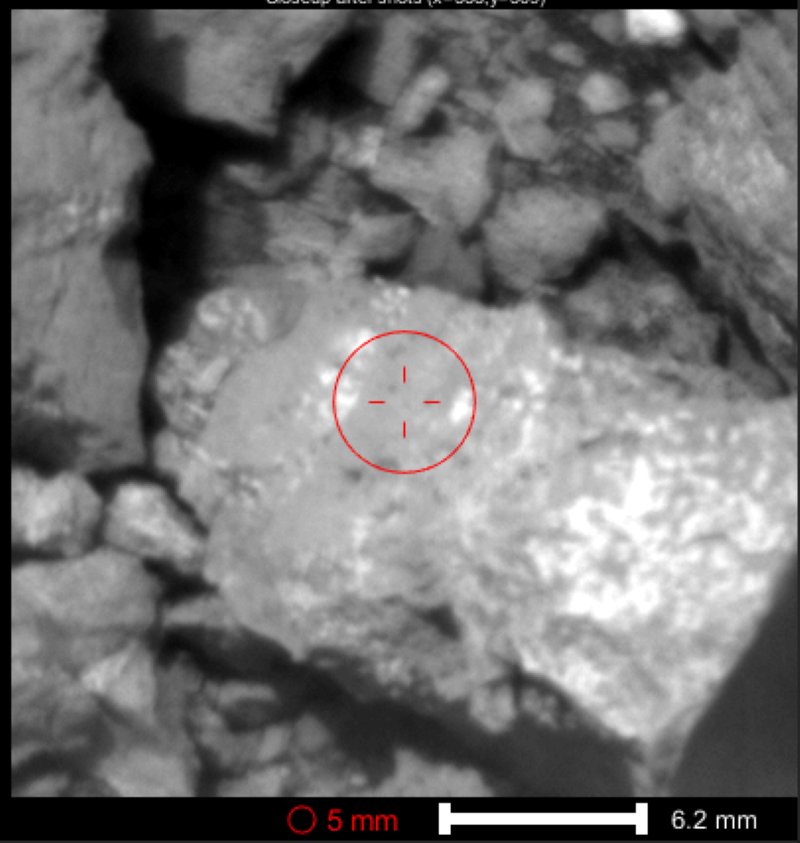
Spectra of ChemCam shots on the 4th point of the Royce Lakes target
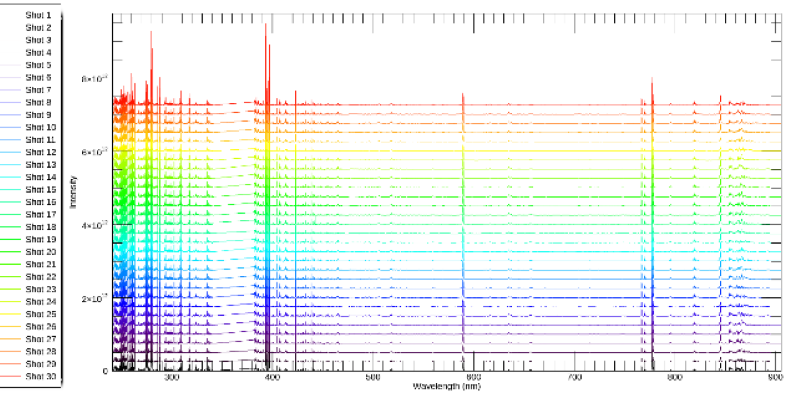
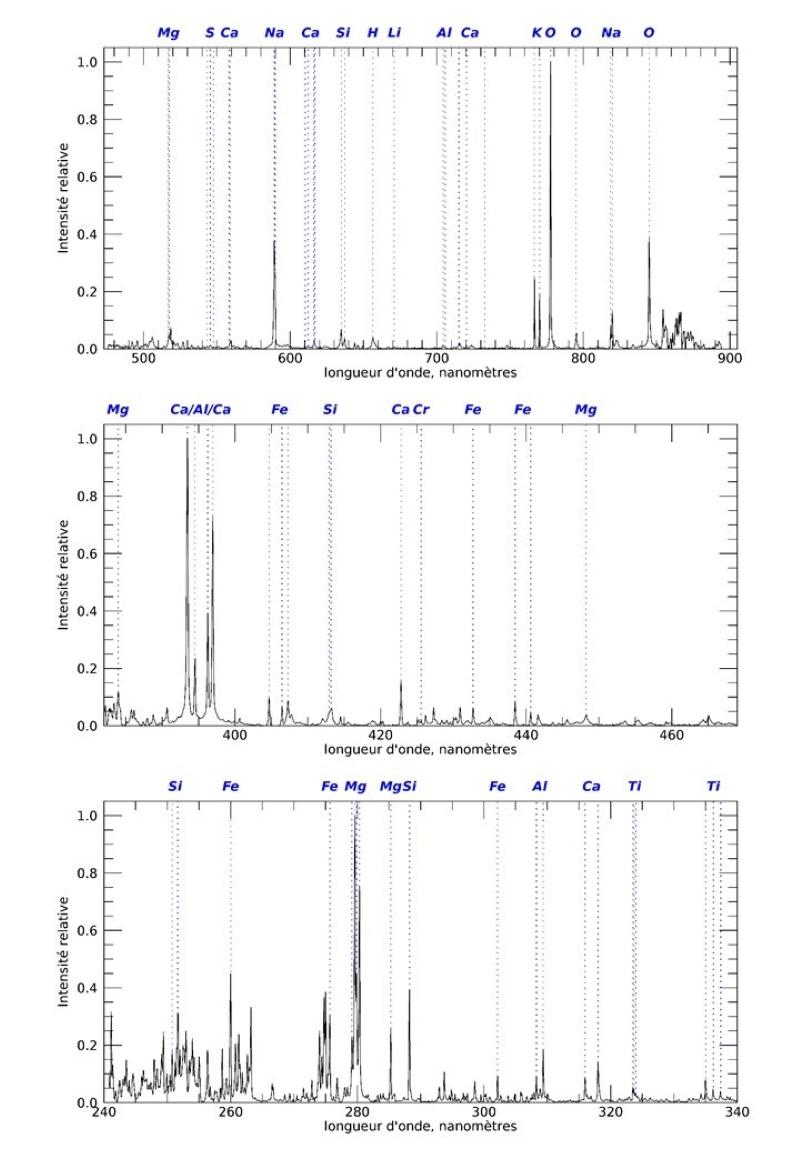
About ChemCam and SuperCam lasers
ChemCam and SuperCam lasers send an infrared beam to vaporize a tiny bit of rock material a few meters away in the form of a hot plasma, whose light is analyzed to determine its chemical composition. This method is called Laser-Induced Breakdown Spectroscopy (LIBS).
SuperCam's laser can also emit a second green laser beam, which helps detect the presence of minerals and fluorescent organic compounds.
This analysis technique is called Raman spectroscopy. These two techniques were tested for the first time on Mars with ChemCam for LIBS and SuperCam for Raman, enabling scientists to better determine the components present.
Our greatest strength lies in the international, technical and scientific collaboration around this project. Bringing this new method of analysis to Mars has opened up a new field of study, which consists of studying rocks at the grain scale.
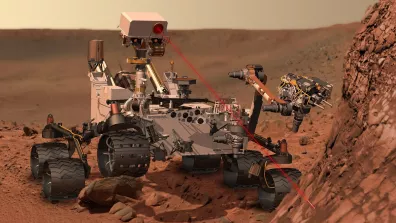
ChemCam, the French-American instrument aboard NASA's Curiosity rover
ChemCam's mission is to measure the chemical composition and image the rocks and soil on the surface of Mars.
The French hardware contribution to ChemCam was built on a partnership between CNES, CNRS-INSU, several universities (Toulouse, Bordeaux, Paris, Lorraine, Lyon) and CEA.
ChemCam is under the joint scientific responsibility of Los Alamos National Laboratory (LANL) in New Mexico (USA), and the Institut de Recherche en Astrophysique et Planétologie (IRAP, France) of the Observatoire Midi-Pyrénées in Toulouse.
CNES plays a major role in its operational and technical operation, in conjunction with the Jet Propulsion Laboratory (JPL, USA) and research laboratories on both sides of the Atlantic.
Between the MSL/Curiosity and Mars 2020/Perseverance missions, we have become trusted partners of NASA, and our instruments and teams have proved their worth.
When it arrived on Mars, the ChemCam laser was the most powerful at the surface of another planet, until the arrival of the SuperCam laser in February 2021 on NASA's Perseverance rover.
Both lasers were built by the laser teams from Thales, in France, under CNES contract and following a Research and Development project at CNES in the early 2000s.
Designed to operate for two years, the ChemCam laser has been used in operations for 12 years. This longevity is a real source of pride for the teams of our Group, and this millionth shot is a major symbolic milestone for this extraordinary technological adventure, which is continuing with CNES and NASA with a second laser for SuperCam on the Perseverance rover, on Mars since 2021.
Curiosity a key element of NASA's MSL mission
The Mars Science Laboratory (MSL) mission is led by the Jet Propulsion Laboratory (JPL) in the USA. Curiosity was designed, developed and assembled there. The nominal mission was one year on Mars (just over two years on Earth). Today, Curiosity has been roving the red planet for 12 years! It has covered more than 32 km in Gale crater, and its instruments have collected a wealth of data on mineralogical and chemical compositions, studied the geology of the site, and monitored meteorology and radiations on Mars.
The mission revealed dry rivers and lakes, ancient hydrological activity with cycles of hydration and drying at the surface. This mission has discovered an environment that might have been favorable to a simple form of life, had it existed.
With this millionth shot, ChemCam has not finished unlocking the secrets of the red planet!


